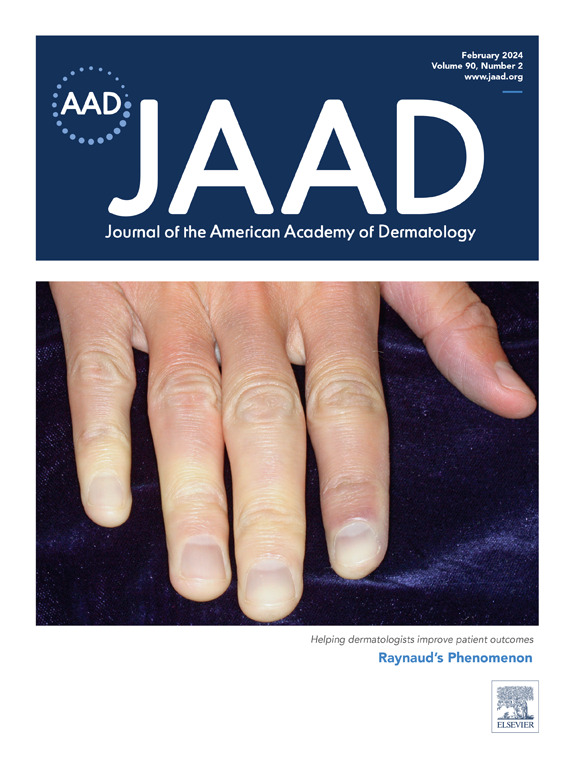North American clinical practice guidelines for the medical management of hidradenitis suppurativa in special patient populations
IF 12.8
1区 医学
Q1 DERMATOLOGY
引用次数: 0
Abstract
Background
Hidradenitis suppurativa (HS) affects different patient populations that require unique considerations in their management. However, no HS guidelines for these populations exist.
Objective
To provide evidence-based consensus recommendations for patients with HS in 7 special patient populations: (i) pregnancy, (ii) breastfeeding, (iii) pediatrics, (iv) malignancy, (v) tuberculosis infection, (vi) hepatitis B or C infection, and (vii) HIV disease.
Methods
Recommendations were developed using the Grading of Recommendations Assessment, Development, and Evaluation system to ascertain level of evidence and selected through a modified Delphi consensus process.
Results
One hundred eighteen expert consensus statements are provided for the management of patients with HS across these 7 special patient populations.
北美特殊患者群体化脓性汗腺炎医疗管理临床实践指南。
背景:化脓性汗腺炎(HS)影响不同的患者群体,其管理需要独特的考虑。然而,没有针对这些人群的卫生指南。目的:为七个特殊患者群体的HS患者提供循证共识建议:i)妊娠,ii)母乳喂养,iii)儿科,iv)恶性肿瘤,v)结核病感染,vi)乙型或丙型肝炎感染,以及vii)艾滋病毒感染。方法:采用建议分级评估、发展和评价系统制定建议,以确定证据水平,并通过改进的德尔菲共识过程进行选择。结果:在这7个特殊患者群体中,为HS患者的管理提供了119份专家共识声明。
本文章由计算机程序翻译,如有差异,请以英文原文为准。
求助全文
约1分钟内获得全文
求助全文
来源期刊
CiteScore
8.60
自引率
5.80%
发文量
2023
审稿时长
49 days
期刊介绍:
The Journal of the American Academy of Dermatology (JAAD) is the official scientific publication of the American Academy of Dermatology (AAD). Its primary goal is to cater to the educational requirements of the dermatology community. Being the top journal in the field, JAAD publishes original articles that have undergone peer review. These articles primarily focus on clinical, investigative, and population-based studies related to dermatology. Another key area of emphasis is research on healthcare delivery and quality of care. JAAD also highlights high-quality, cost-effective, and innovative treatments within the field. In addition to this, the journal covers new diagnostic techniques and various other topics relevant to the prevention, diagnosis, and treatment of skin, hair, and nail disorders.

 求助内容:
求助内容: 应助结果提醒方式:
应助结果提醒方式:


